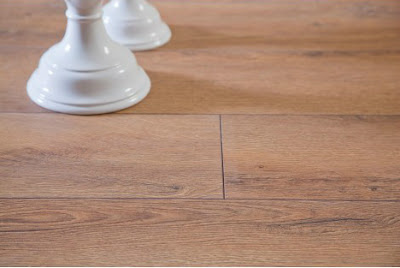Laminate Versus Engineered Wood Flooring: Let The Battle Commence!
Let us face it. There is a constant tug of
war going on between laminate and engineered
wood floors amongst users. With so many varieties, textures, colour variants
and renowned brands like Egger Laminate Flooring
and Kronotex Laminate Floors; it is quite common
for users to get overwhelmed easily. Therefore, narrowing down to a decision is
very difficult. Hence, this write-up strives to clear out every inch of doubt that
you hold by drawing a precise comparison between the two strong alternatives to
the hardwood floor, existing in the
market today.
1.
Composition
Both are certainly not real hardwood, but
the composition is definitely different. While Laminate Wood Floors constitutes
wood fibres, where the thinly pressed wood board is topped with wear layer and
a spectacular wood image, the Engineered Wood Floors are of plywood composition
covered with a veneer skin.
2.
Expenses
Coming to price, laminates definitely enjoy
an upper hand over engineered ones, which
is why it’s popular among users all over the world.
3.
Thickness
As per thickness is concerned, while the entire
thickness of a laminate ranges between 0.24”- 0.47”, the veneer top on
engineered wood floors lies between 0.083” and 0.25”.
4.
Scope of repairs
As laminates are not attached to the
underlayment, these are generally known to be floating floors. So repairs
usually indicate replacement of boards unlike engineered ones, which allows
refinishes on its thin veneer top.
5.
Resistance to moisture
Laminates are moisture resistant to some
extent, with the waterproof shield safeguarding it from water. However, it swells up when the water infiltrates to the
bottom layers. This is where an engineered floor wins over the hearts of users,
as it stands up to moisture better than any laminate.
6.
Comfort underfoot
As compared to engineered floors, laminates
are easy to walk on and feel warmer. This can be attributed to its thickness,
which is better than the vinyl layer covering up the engineered boards.
7.
Installation
As per ease of installation, both the
variants carry it off well but fail to resist
moisture in bathrooms or any other moisture-prone room.
Postscript:
The ongoing battle is likely to continue
because the requirements of users vary. So the clear winner will obviously depend
on each flooring’s capacity to meet the needs of individuals. Hopefully, the comparison
will benefit you the next time you are in a dilemma.



Comments
Post a Comment